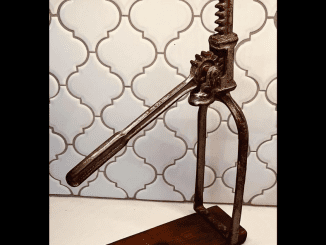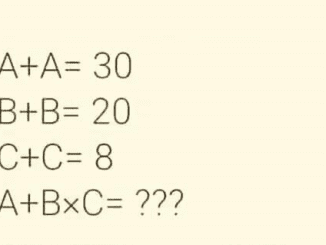At first glance, this image looks innocent enough—just a few rows of adorable cartoon rabbits, right? But look closer, and you’ll realize this isn’t your average animal picture. Hidden within the seemingly straightforward layout is a clever visual riddle: How many rabbits do you actually see?
Most people take one look and blurt out “9,” assuming there’s one rabbit in each square. But if you think the answer is that easy… think again.
This optical puzzle has a twist, and only the most observant minds will spot it.
The Purpose of This Puzzle

This type of riddle isn’t just fun—it’s also a great brain exercise. It forces you to slow down, look at details, and think beyond what’s immediately obvious. It challenges your ability to focus, compare patterns, and question assumptions.
In a world full of distractions and snap judgments, these puzzles train your brain to dig deeper—and that’s a skill worth having.
Why So Many Get It Wrong at First
Let’s break down where most people go wrong:
- Quick judgments: Most people assume there’s only one rabbit per position and stop counting at nine.
- Overlooking details: Some rabbits are cleverly overlapping or sharing ears and limbs. It’s easy to miss that one image may contain two bunnies disguised as one.
- Not double-checking: Many viewers don’t go back to scan again after their initial count.
This isn’t a math problem or a complex logic test—it’s a challenge of attention to detail.
Step-by-Step Guide to Solving the Puzzle
So, how do you figure out the actual number of rabbits?
Video : How many Rabbits are there in this Image?
Here’s how to approach it:
Step 1: Count the Obvious
Start with the basics: There are 9 distinct illustrations in a 3×3 grid. At first glance, each square has one rabbit.
So far, that’s 9.
Step 2: Look for Hidden Details
Now let’s zoom in on the artwork. In several squares, there are overlapping rabbits—cleverly drawn to look like one. Look for extra ears, eyes, paws, or tails peeking out.
Let’s examine a few examples:
- Middle left rabbit: Look closely at the front paws—there’s an extra set! That’s two rabbits.
- Top right square: Two sets of ears are visible, with two different necks. Another duo hiding in one image.
- Bottom center: Again, two tails and legs show two bunnies snuggling close.
Once you examine each square carefully, you’ll begin to uncover the cleverly hidden extra rabbits.
Step 3: Recount With Precision
After evaluating the entire image, here’s the breakdown:
- 3 squares with 2 rabbits each
- 6 squares with 1 rabbit each
That gives us:
(3 x 2) + (6 x 1) = 6 + 6 = 12 rabbits… Wait—look again!
If you carefully examine the lower-left and upper-middle squares, you’ll find that two more rabbits are cleverly drawn using partial lines, tail overlaps, or shared body parts.
That brings the total to 14 rabbits.
Final Answer: 14 Rabbits

What This Puzzle Teaches You
Beyond just being a cute animal riddle, this challenge teaches a few valuable lessons:
- Attention matters: The brain tends to filter out “extra” information. This puzzle forces you to override that reflex.
- What you see isn’t always the full picture: A deeper look often reveals things you missed at first.
- Observation is a skill you can develop: Like a muscle, your ability to spot detail improves with practice.
This kind of thinking isn’t just for riddles—it’s useful in everyday problem-solving, whether you’re editing a paper, troubleshooting an issue, or scanning a contract.
Encourage Your Friends to Try It Too
This puzzle makes a great conversation starter or social media challenge. Here’s what you can do:
- Post the image and ask, “How many rabbits do YOU see?”
- Watch the comment section light up with debates
- Share the correct answer after a while to surprise everyone
- Use it as a fun icebreaker or family game night brain teaser
Video : Even the Smartest Professor Can’t Solve All 17 Riddles
It’s the perfect mix of simple, visual, and clever—and it appeals to both kids and adults alike.
Conclusion: Count Again—Because First Impressions Can Be Deceiving
So, how many rabbits do you see?
If you spotted all 14, congrats! You’ve got sharp eyes and serious attention to detail. If not, don’t worry—you’re in good company. Most people stop at 9 or 10.
Puzzles like this one aren’t about getting it right on the first try. They’re about slowing down, taking a second look, and realizing that sometimes the truth is hidden in plain sight.
So keep challenging yourself, keep playing, and most importantly—keep looking closer.


